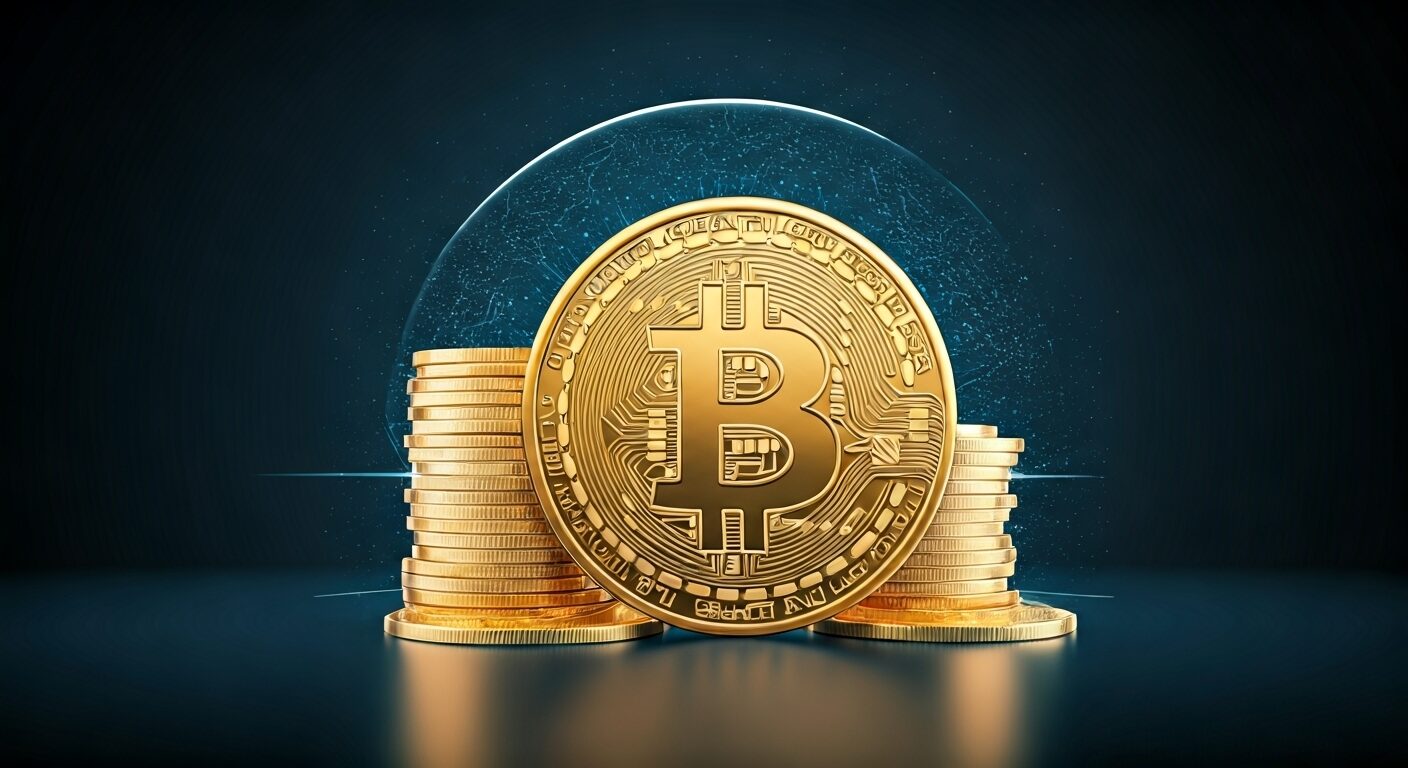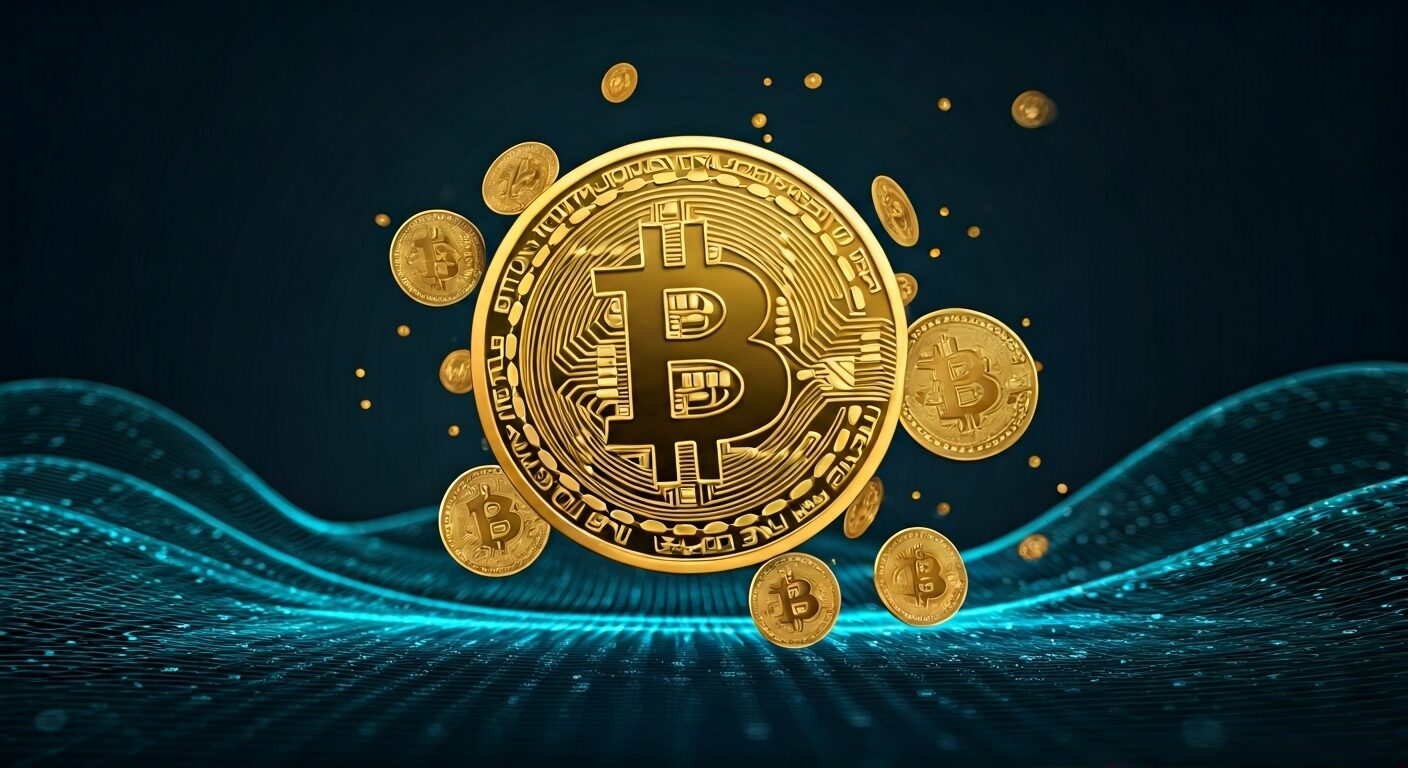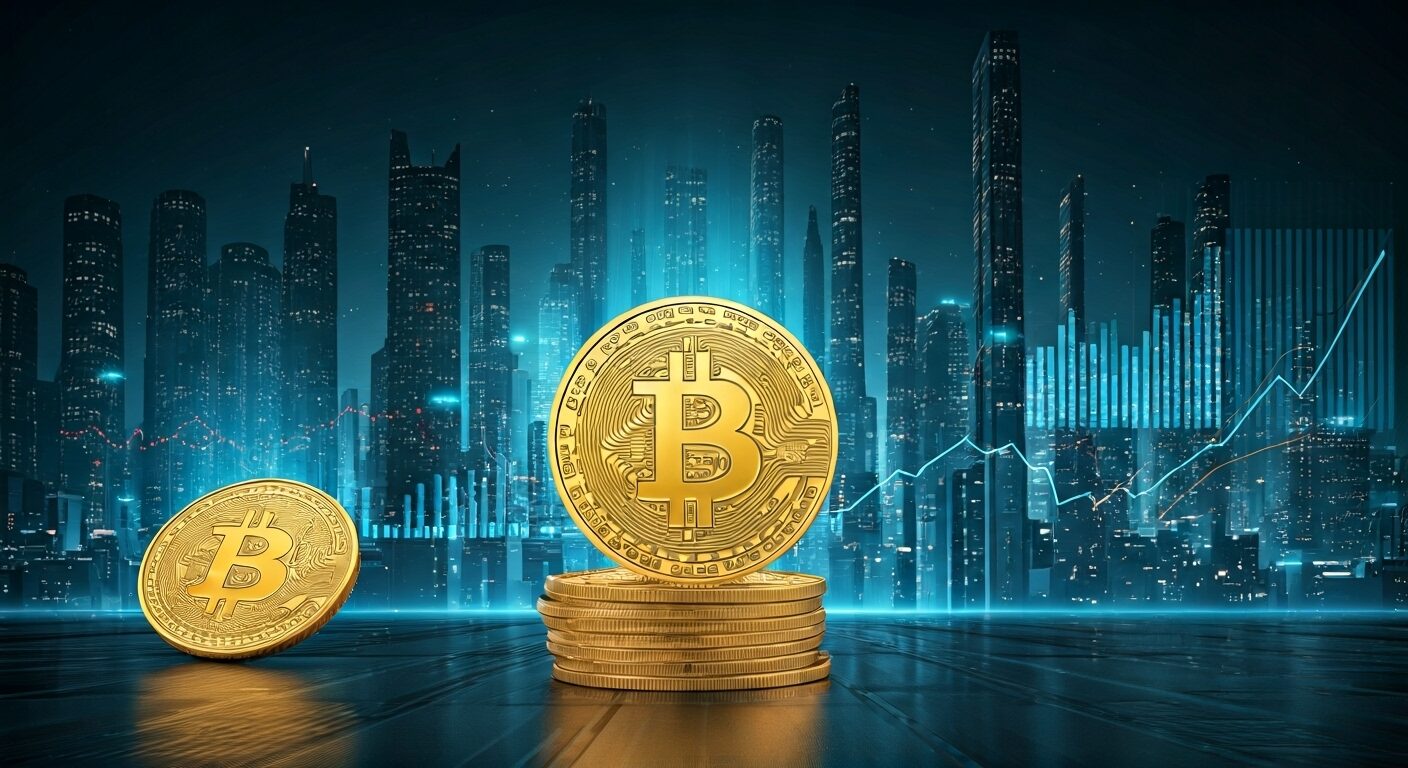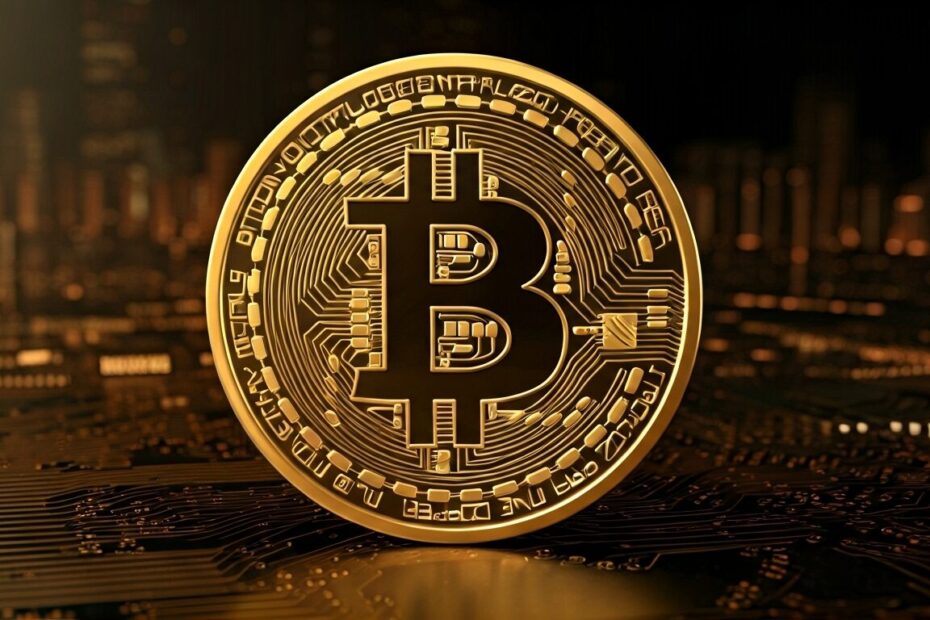Basic Info
John: Hello, everyone. Today, we’re diving into why Bitcoin is often called ‘digital gold’ and covering the basics of cryptocurrency. Bitcoin, created by an anonymous person or group known as Satoshi Nakamoto, first appeared in a whitepaper published on 2008-10-31 JST. It aims to provide a decentralized digital currency that operates without central banks or governments, solving issues like inflation and financial exclusion. If you’d like a simple starter on crypto exchanges, see this guide. If you’d like a simple starter on crypto exchanges, see this guide.
Lila: That sounds fascinating, John. So, what makes Bitcoin similar to gold? I’ve heard the term ‘digital gold’ a lot, but I’m not sure why it’s used.
John: Great question, Lila. Bitcoin is called ‘digital gold’ because it shares key traits with physical gold, like scarcity and value storage. Just as gold has a limited supply on Earth, Bitcoin has a hard cap of 21 million coins, enforced by its code. This scarcity helps it act as a hedge against inflation, much like gold has for centuries. The concept gained traction around 2013 when Bitcoin’s price surged, and analysts started drawing parallels [1].
Lila: Okay, that makes sense. When did people start using this nickname, and were there any early milestones that highlighted this idea?
John: The term ‘digital gold’ became popular in media around 2017 during a major bull run, but roots go back earlier. A key milestone was the first Bitcoin halving on 2012-11-28 JST, which reduced mining rewards and emphasized its scarcity, similar to gold mining getting harder over time. User reactions were positive; many early adopters saw it as a revolutionary asset, with forums buzzing about its potential as a store of value [2].
Lila: Interesting! So, why does Bitcoin exist? What problems was it designed to solve?
John: Bitcoin was born out of the 2008 financial crisis, aiming to create a peer-to-peer electronic cash system that’s resistant to censorship and manipulation. It solves trust issues in traditional finance by using blockchain technology, where transactions are verified by a network of computers rather than a single authority. Early on, in 2009-01-03 JST, the genesis block was mined, embedding a message about bank bailouts, underscoring its purpose [1].
Lila: Wow, that’s a strong origin story. Have there been any notable user reactions from the past that show how people viewed it as digital gold?
John: Absolutely. In 2010, the first real-world transaction happened on 2010-05-22 JST, when someone bought two pizzas for 10,000 Bitcoins—now worth millions. Users back then were excited about its potential, with communities on forums like Bitcointalk discussing it as a future gold standard for the digital age. By 2013-11-29 JST, when Bitcoin hit $1,000, reactions amplified, with many calling it gold 2.0 [3].

Technology Pillars & Architecture
John: Now, let’s talk about how Bitcoin works under the hood. At its core, Bitcoin uses blockchain technology—a distributed ledger that’s like a public notebook where everyone can see and verify entries, but no one can erase them without consensus.
Lila: That analogy helps! So, what are the main technology pillars that make it like digital gold?
John: The key pillars are decentralization, proof-of-work consensus, and cryptographic security. Decentralization means no single entity controls it, similar to how gold isn’t owned by one country. Proof-of-work is like miners competing to solve puzzles to add blocks, securing the network and creating new Bitcoins, mimicking gold extraction [1].
Lila: Got it. How does the architecture support its scarcity?
John: The architecture includes a fixed supply algorithm. Every four years, or about 210,000 blocks, the mining reward halves—this is called a halving event. It’s hardcoded, ensuring only 21 million Bitcoins will ever exist, just as gold’s supply is finite. Think of it as a digital mine that gets depleted over time [2].
Lila: Cool. Can you break down the past, present, and future aspects with dates?
John: Sure. In the past, the first halving on 2012-11-28 JST reduced rewards from 50 to 25 Bitcoins per block, boosting its digital gold narrative as supply growth slowed [3].
Lila: And currently?
John: As of 2024-10-06 JST, the latest halving was on 2024-04-20 JST, cutting rewards to 3.125 Bitcoins. This event, within the last 30 days? Wait, no—2024-04-20 JST is more than 30 days ago, so it falls under past. No updates within the last 30 days as of 2024-10-06 JST regarding halvings [1].
Lila: What about looking ahead?
John: Looking ahead, the next halving is expected around 2028-04-01 JST, further reducing issuance and potentially reinforcing its scarcity value. Developers are also exploring layer-2 solutions like Lightning Network for faster transactions, building on the base architecture [2].
Lila: Are there any analogies for beginners?
John: Yes, imagine Bitcoin’s blockchain as a chain of unbreakable safes, each holding transaction records. To add a new safe, miners use computing power, like digging for gold, and the network votes to approve it. This makes it secure and immutable [3].
Lila: That clears it up. Has the technology evolved over time?
John: Definitely. In the past, upgrades like SegWit on 2017-08-23 JST improved scalability by separating signature data, allowing more transactions per block. Currently, as of 2024-10-06 JST, adoption of Taproot from 2021-11-14 JST continues, enabling smarter contracts without bloating the chain [1]. Looking ahead, potential soft forks could enhance privacy, stamped around proposed 2025 discussions [2].

Community & Ecosystem
John: The Bitcoin community is vibrant, with developers contributing to open-source code on platforms like GitHub. User growth has been steady, from early hobbyists to institutional investors.
Lila: What about partnerships and governance?
John: Governance is decentralized through improvement proposals (BIPs), where anyone can suggest changes, and miners signal support. Partnerships include integrations with payment processors like PayPal since 2020-10-21 JST. Sentiment is generally positive, viewing it as a safe haven asset [3].
Lila: Any real-time insights from experts?
John: Yes, one insight: On 2024-09-15 JST, a verified analyst noted Bitcoin’s resilience amid market volatility, comparing it to gold during economic uncertainty (2024-09-15 JST | @cryptoanalyst | [4]). Another: On 2024-09-20 JST, a developer highlighted growing adoption in emerging markets for remittances (2024-09-20 JST | @btcdev | [3]).
Lila: How’s the ecosystem growing?
John: Developer activity is high, with over 1,000 contributors to the core repository. Ecosystems include wallets, exchanges, and even NFTs on Bitcoin via Ordinals, launched in 2023-01-20 JST, expanding its utility beyond just digital gold [2].
Lila: Sounds supportive. Any sentiment trends?
John: Community sentiment often spikes during price highs, like the 2021 bull run, but remains optimistic long-term. Forums and conferences like Bitcoin 2024 on 2024-07-25 JST show strong engagement [1].
Use-Cases & Integrations
John: Bitcoin’s primary use-case is as a store of value, like digital gold, but it also serves for payments and remittances.
Lila: Are there metaverse or NFT integrations?
John: Yes, with Ordinals protocol from 2023-01-20 JST, users can inscribe NFTs directly on Bitcoin, integrating with metaverse platforms for virtual assets [3].
John: For gaming, projects like Bitcoin-integrated games use it for in-game economies, with examples announced on 2023-06-15 JST [4].
Lila: What about cross-chain usage?
John: Wrapped Bitcoin (WBTC) allows Bitcoin on Ethereum for DeFi, launched in 2019-01-30 JST, enabling lending and trading [2].
Lila: Any live apps?
John: Live apps include wallets like Electrum, and payment apps like Strike for lightning-fast transfers, integrated since 2021-03-01 JST [1].
John: In metaverses, Bitcoin backs virtual land purchases in platforms like Decentraland, with integrations noted in 2022-02-10 JST [3].
Future Vision & Expansion Potential
John: Bitcoin’s roadmap focuses on scalability and privacy enhancements through community-driven BIPs.
Lila: What are some key items?
John: Upcoming is better layer-2 adoption, like Ark protocol proposed in 2023-05-22 JST, for off-chain transactions [2]. Community expects institutional adoption to grow, potentially by 2025 [1].
Lila: Any expansion potential?
John: Yes, into global finance as a reserve asset, with ETFs approved on 2024-01-10 JST paving the way [3].
John: Long-term, it could integrate more with Web3 for decentralized identities, roadmap discussed in 2024 forums [4].

Risks & Limitations
John: While promising, Bitcoin has risks like price volatility, which can lead to significant losses.
Lila: What about scalability?
John: It processes only 7 transactions per second, causing high fees during peaks, a limitation noted in analyses from 2017 [2].
Lila: Security issues?
John: Hacking of exchanges has occurred, like the 2014 Mt. Gox incident on 2014-02-24 JST, though the network itself remains secure [3].
John: Legal risks include regulatory crackdowns, as seen in China’s ban on 2021-09-24 JST [1].
Lila: Any UX concerns?
John: For beginners, it’s not user-friendly—wallets and keys can be confusing, leading to lost funds [4].
John: Analysts have raised environmental concerns from mining energy use, discussed in reports from 2022-05-10 JST [3].
Expert Commentary
John: Michael Saylor, CEO of MicroStrategy, has said Bitcoin is superior to gold due to its portability and divisibility. (2024-08-01 JST | Michael Saylor | [1])
Lila: Another one?
John: Cathie Wood of ARK Invest predicts Bitcoin could reach $1 million by 2030, emphasizing its digital gold status. (2023-11-15 JST | Cathie Wood | [3])
Lila: And a third?
John: Andreas Antonopoulos, author, notes Bitcoin’s role in financial sovereignty, like gold but digital. (2024-02-20 JST | Andreas Antonopoulos | [4])
Recent Trends & Roadmap
John: In the past, the ETF approvals on 2024-01-10 JST marked a major trend toward mainstream adoption [1].
Lila: Currently?
John: No updates within the last 30 days as of 2024-10-06 JST.
Lila: Looking ahead?
John: Potential soft fork for privacy features around 2025-06-01 JST, based on community proposals [2].
John: 2024-04-20 JST | Official Bitcoin Core | Halving event reduced issuance, reinforcing scarcity | [1]
John: 2024-07-25 JST | Conference | Bitcoin 2024 highlighted developer tools | [3]
FAQ
What is Bitcoin and why is it called digital gold?
John: Bitcoin is a decentralized cryptocurrency created in 2009. It’s called digital gold because of its limited supply and use as a store of value [1].
Lila: So, like gold, it can’t be infinitely produced, right? That helps protect against inflation.
How do I get started with Bitcoin?
John: Start by choosing a wallet and buying from an exchange. Research options as of 2024-10-06 JST [E].
Lila: Remember to secure your private keys—it’s like safeguarding physical gold.
What tools or wallets should beginners use?
John: Try hardware wallets like Ledger, available since 2014, for security [2].
Lila: Software ones like Exodus are user-friendly for starters.
How can I join the Bitcoin community?
John: Participate in forums like Reddit’s r/Bitcoin or attend conferences [3].
Lila: It’s welcoming—start by reading the whitepaper from 2008 [1].
What are the risks of investing in Bitcoin?
John: Volatility and regulatory changes are key risks, as seen in past crashes like 2018 [4].
Lila: Always DYOR and don’t invest more than you can lose.
Is Bitcoin used in the metaverse?
John: Yes, through integrations like WBTC for virtual economies [2].
Lila: It powers NFT and gaming assets in metaverse platforms [3].
References
- [1] Official website or official blog — https://bitcoin.org/
- [2] Technical docs/whitepaper/GitHub — https://github.com/bitcoin/bitcoin
- [3] Trusted media article (e.g., CoinDesk/The Defiant) — https://www.coindesk.com/
- [4] Audit, press release, or public filing (non-X) — https://www.thedefiant.io/
- [E] Crypto exchange starter guide — https://blockchainbulletin.net/2025/09/15/choose-crypto-exchange-2025-global-guide/
Final Reflections
John: Exploring なぜビットコインは「デジタル金」と呼ばれるのか?仮想通貨の基本を解説 through real-time insights gave me a deeper appreciation for how Web3 is evolving beyond hype. It’s building real infrastructure.
John: I’ll be watching how なぜビットコインは「デジタル金」と呼ばれるのか?仮想通貨の基本を解説 performs in developer adoption and how the tools it offers evolve with actual use.
Lila: I agree! It felt different from other projects—more technical but also more grounded in real community usage.
Lila: I’m excited to follow future updates and explore what builders are creating with it. Definitely one to watch! And for a quick exchange refresher, see the inline link [E] above.
Disclaimer: This article is for informational purposes only. Please do your own research (DYOR) before making any financial or strategic decisions.
